At home with Calder: the artist’s hidden knack for domestic design
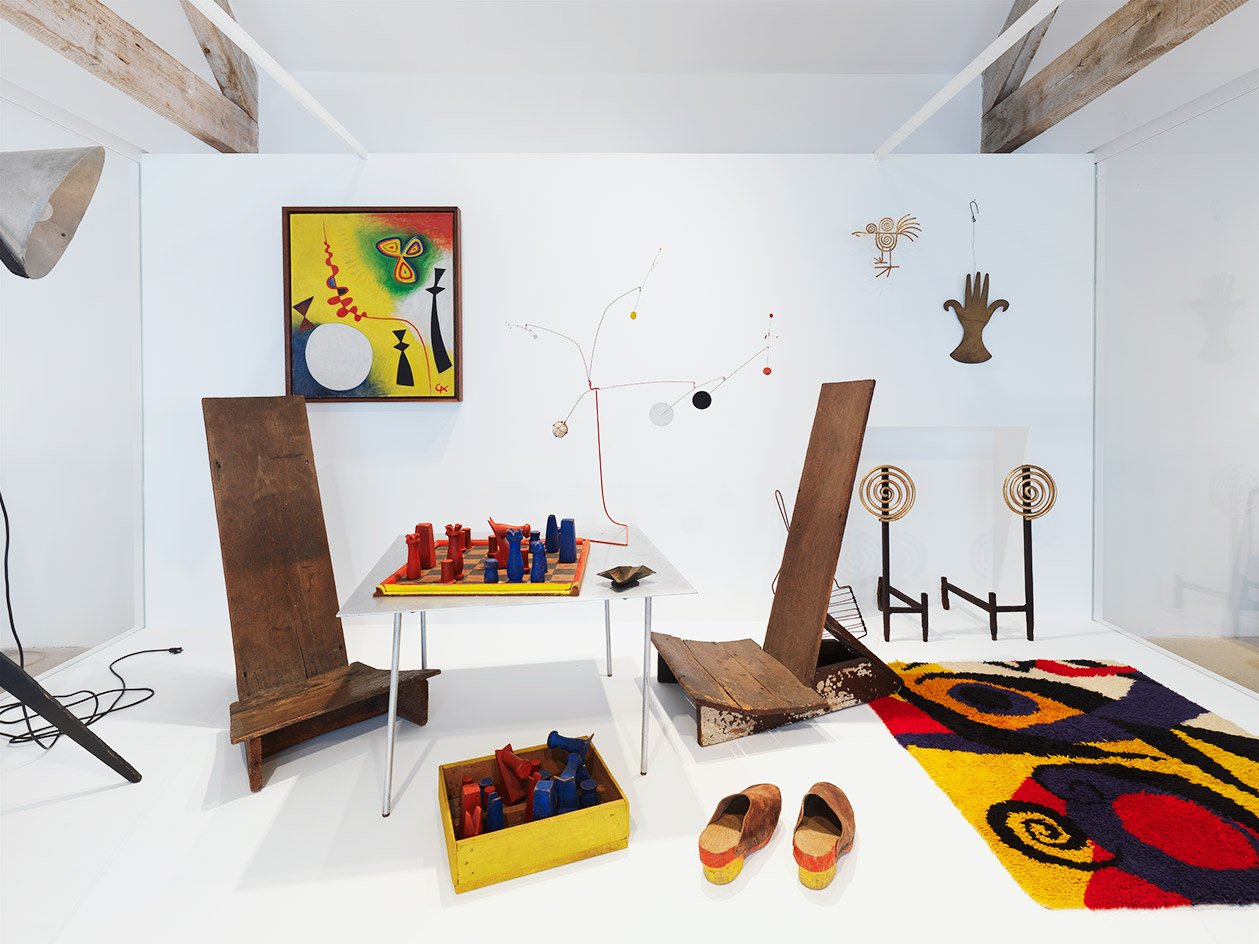
In September 1933, Alexander Calder and his wife Louisa purchased a property in Roxbury, northwest Connecticut. This 1760 farmhouse became the artist’s long-time home and studio: the American sculptor constantly adapted it to fit his growing family and built three studios over the years to accommodate his practice. ‘Roxbury had a direct impact on Calder’s work. He owned 18 acres and was inspired to bring sculpting outdoors for the first time,’ explains Alexander SC Rower, president of the Calder Foundation and grandson of the artist.
It was here in the expanse of Roxbury’s rolling hills that Calder created many seminal pieces, including Apple Monster (1938), made from a fallen branch of an ancient apple tree on the property. After being exhibited all over the world in countless blue-chip galleries and museums, the prolific 20th-century artist’s works are returning to their natural setting in a bucolic landscape, albeit as part of a major solo exhibition at Hauser & Wirth Somerset, the Swiss gallery’s rural English outpost.
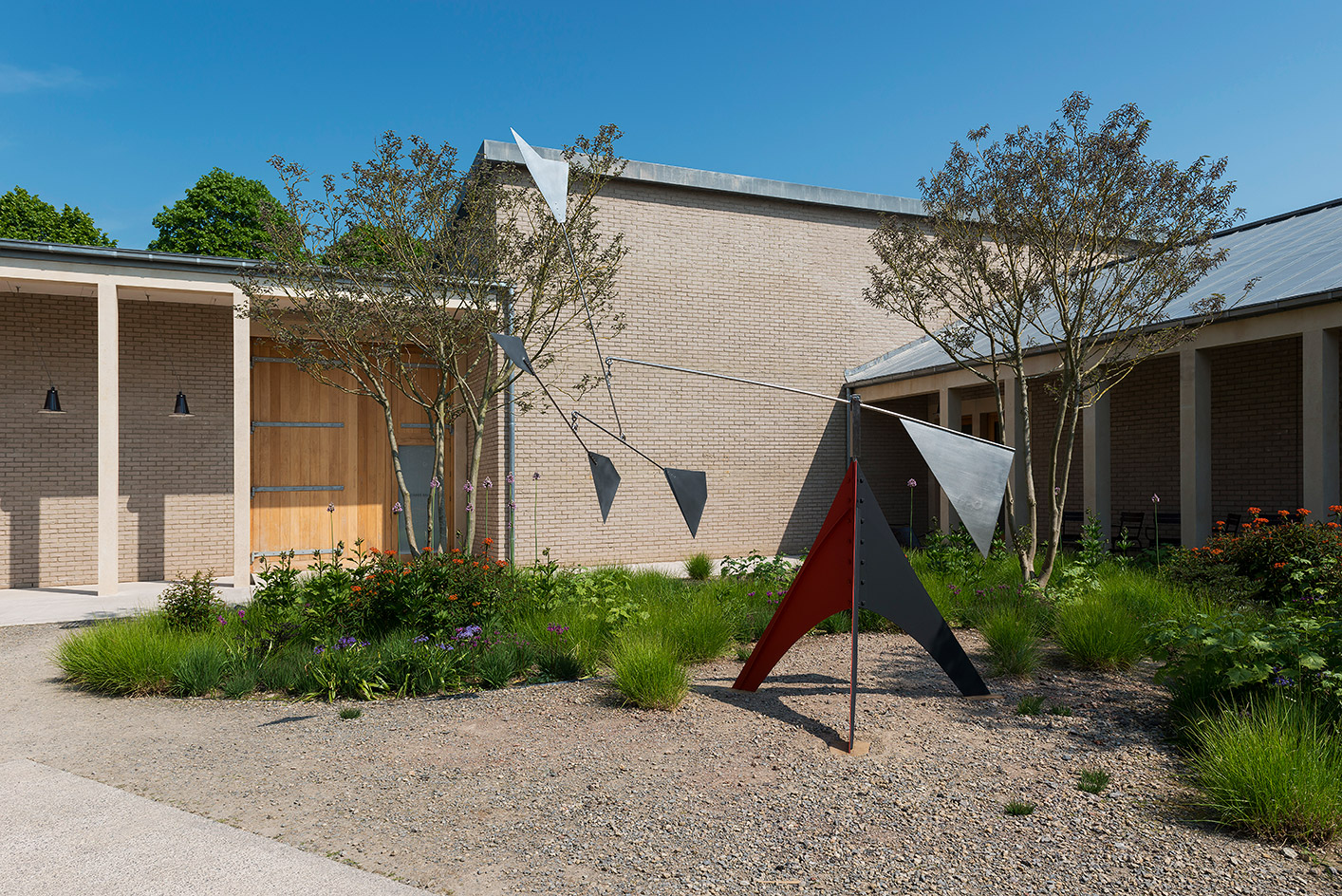
Installation view of ‘Alexander Calder. From the Stony River to the Sky’ at Hauser & Wirth Somerset.
The show focuses largely on the hanging and standing mobiles that Calder was renowned for, presented alongside stabiles, oil paintings, works on paper, jewellery, and monumental outdoor sculptures set within the Piet Oudolf-designed gardens. The exhibition takes its title from the etymology of the surname Calder in Celtic – meaning ‘from the stony river’ – and its inspiration from the artist’s Connecticut residence.
Calder’s less celebrated penchant for design, however, is the real revelation here. Occupying two galleries in the Somerset exhibition is a ‘tremendous installation’ of handcrafted domestic objects and ‘household works’. ‘I say “works’,’ explains Rower, ‘because they’re not works of art but yet they’re works of intriguing significance.’ The remarkable display of the artist’s furniture and product design – plucked from the Roxbury home – includes a chess set, chairs, a coffee table, a pepper grinder, ashtrays, candle holders, a silver rattle, and even a rug designed by Calder and hooked (and subsequently cosigned) by Louisa.
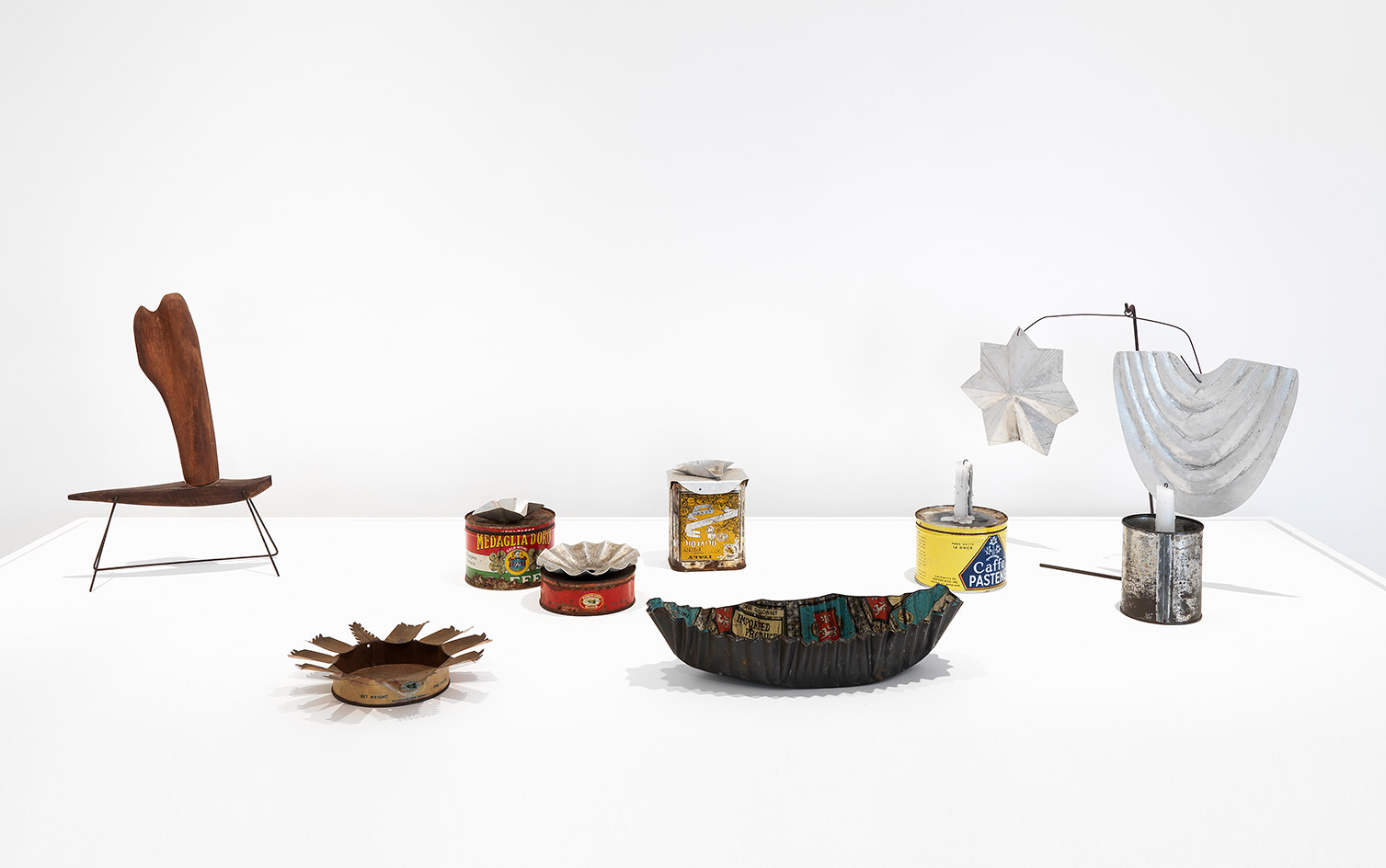
Calder-designed sculptures, ashtrays and candleholders on display at Hauser & Wirth Somerset.
The artist tinkered relentlessly with objects in and around his home, creating endless iterations of humble domestic objects – and no two were ever the same. ‘Sometimes [Calder] challenges you to understand whether it’s a work of art, or a work of decoration, or a utilitarian object,’ says Rower. There was an instance, he recounts, where his grandfather destroyed a perfectly fine Tiffany vessel to harvest the sterling silver, fashioning it into a teething rattle for Calder’s daughter (and Rower’s aunt) Sandra.
‘He converted undistinguished porcelain teacups – inherited from his parents – into espresso cups by adding brass wire ornamental holders (known as zarfs) to insulate fingertips from the searing porcelain. Eventually, he reimagined the entire ceremony of freshly brewed coffee, making or improving everything that was required,’ says Rower. ‘Throughout his life, my grandfather continued to reimagine the purpose of items otherwise relegated to obscurity.’
Here, we trace the provenance of five more domestic objects handcrafted by Calder...
Chess set, c1933, wood and paint
‘Calder was very close with Marcel Duchamp and made a whole array of different chess sets,’ says Rower. In the Somerset show, the chess set has been laid out as a Duchamp game from 1931, depicting ‘move 32 in a game of 41 moves’.
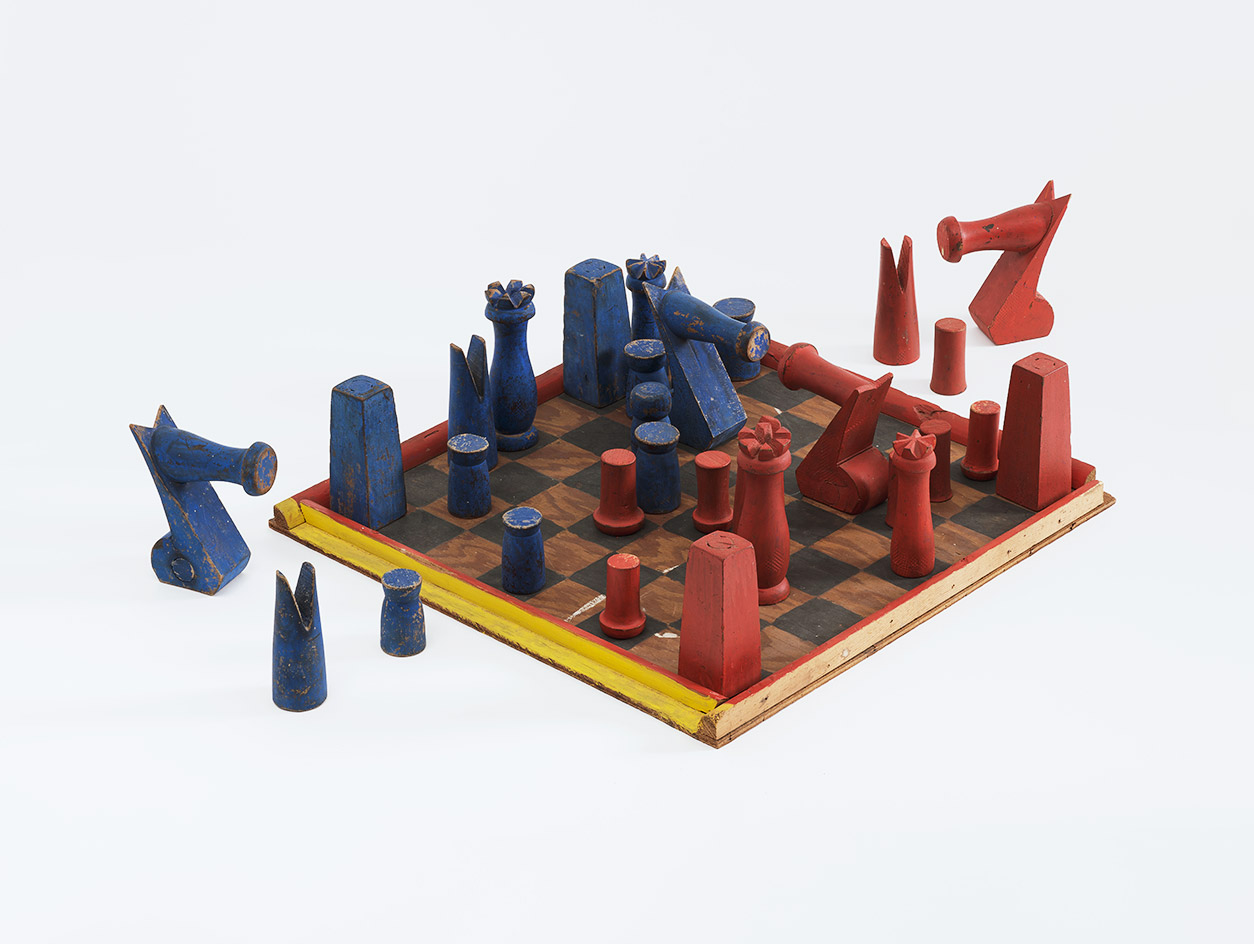
Calder Foundation, New York; Mary Calder Rower Bequest, 2011.
Dinner bell, 1942, glass and wire
‘This was a cheap Mexican goblet wine glass and the stem broke off at party,’ explains Rower. ‘Instead of throwing it away, he repurposed it and turned it into a dinner bell, which is an amazing thing. It was actually used, they used it all the time. These weren’t special occasions – this is just how they lived.’
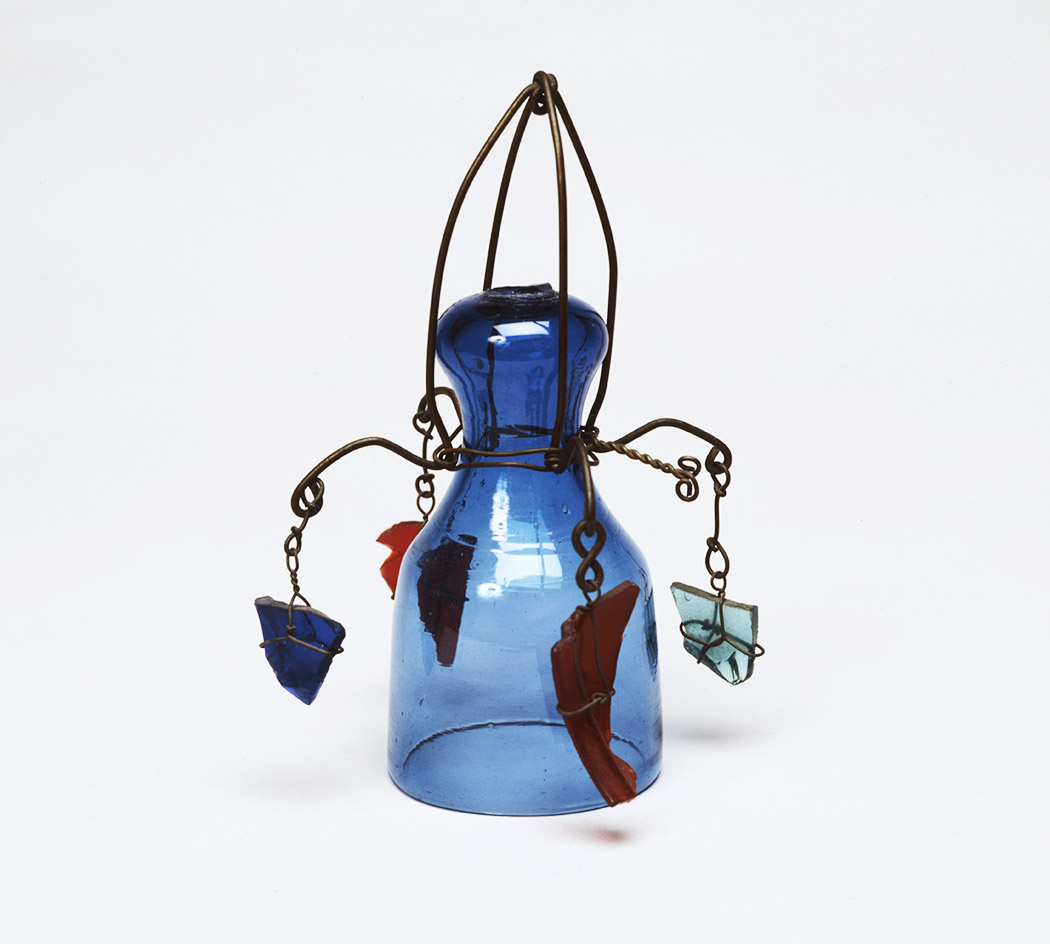
Toilet paper holder, c1952, wire and sheet metal
Calder built his mother a house on the Roxbury property after his father passed away. ‘His father was a sculptor and his mother was a painter, and they were very close,’ says Rower. ‘ He built her this little house to move into, and in the bathroom he attached to the windowsill this hand as a toilet paper holder, to unfurl the toilet paper.’ An accompanying bathroom mirror was designed at the same time.
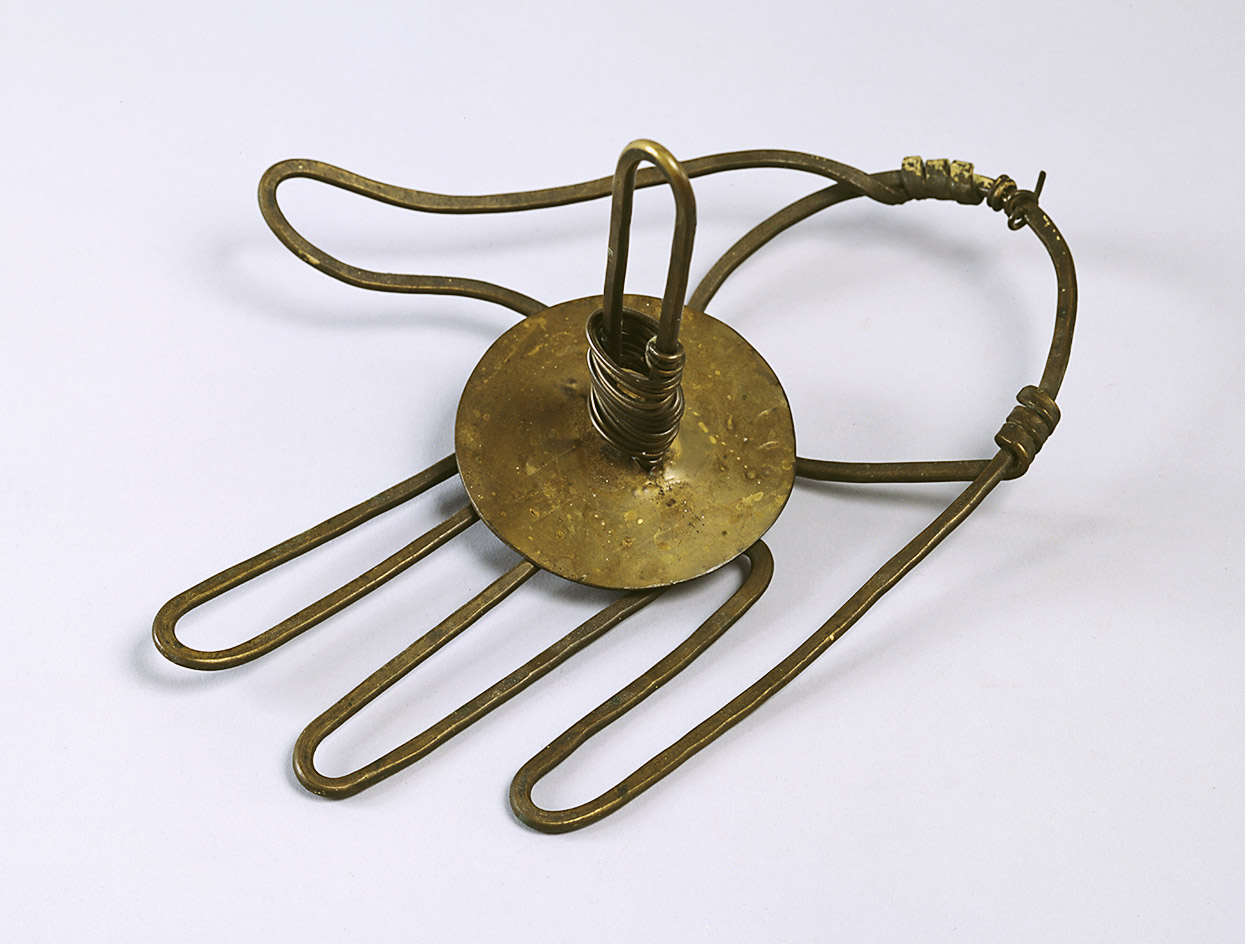
Toaster, c1942, wire, wood, metal, plaster, nails, and screws
According to Jessica Holmes, art critic and former deputy director of the Calder Foundation: ‘Calder believed his visualisation of a toaster was stronger than that of a mass-produced one, which led him to develop toasters of his own conception. One design (pictured below) includes an ingenious “warming plate” upon which toasted slices of bread could rest, melting the butter via the heat generated by the machine below.’
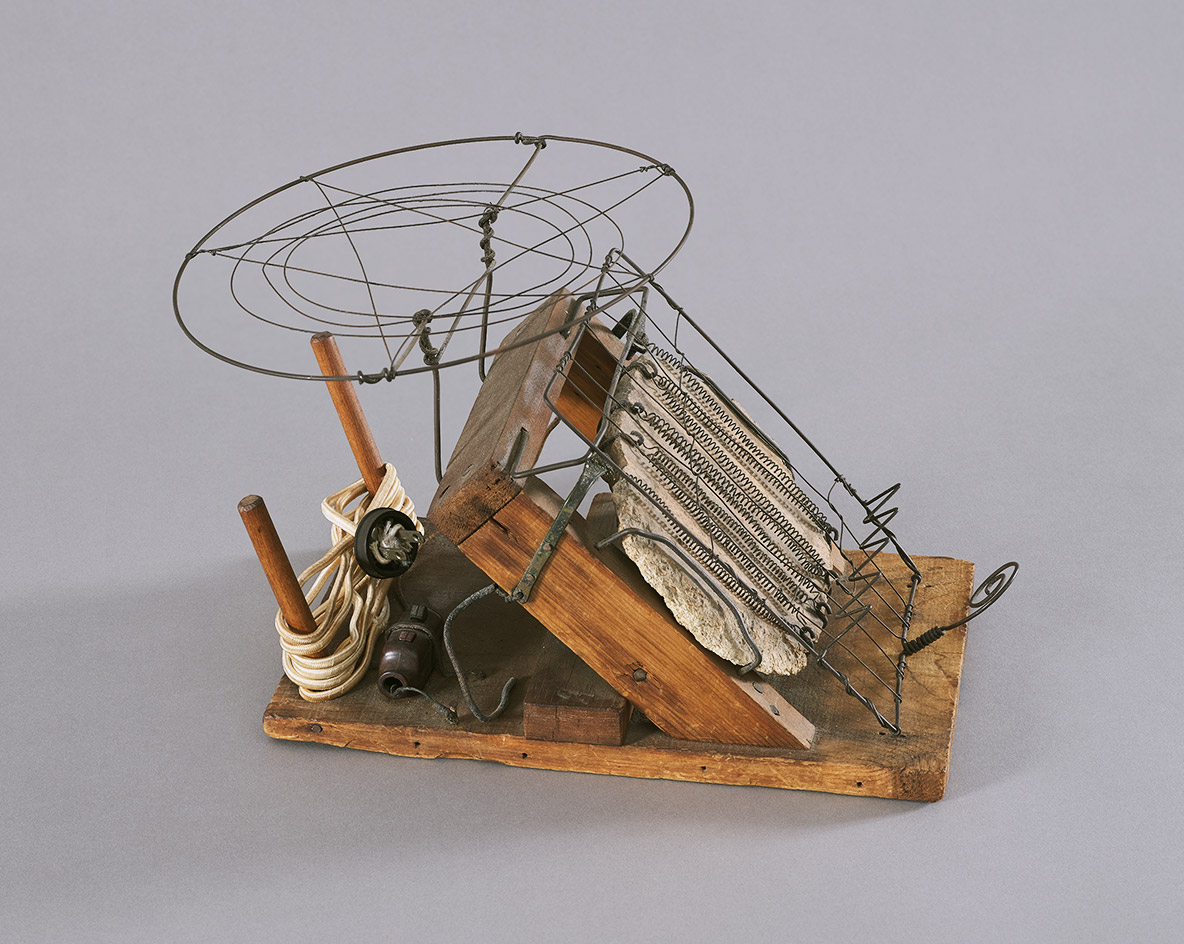
Milk skimmer, c1940, silver wire
‘This exotic object is for the kitchen. When my grandparents went to the farm down the road to get a bucket of fresh milk, they would boil it on the stove to pasteurise it,’ adds Rower. ‘You put this [skimmer] into the pot and lift that leathery skin off it. It’s also made from silver – bacteria doesn’t grow on the surface of silver.’
Receive our daily digest of inspiration, escapism and design stories from around the world direct to your inbox.
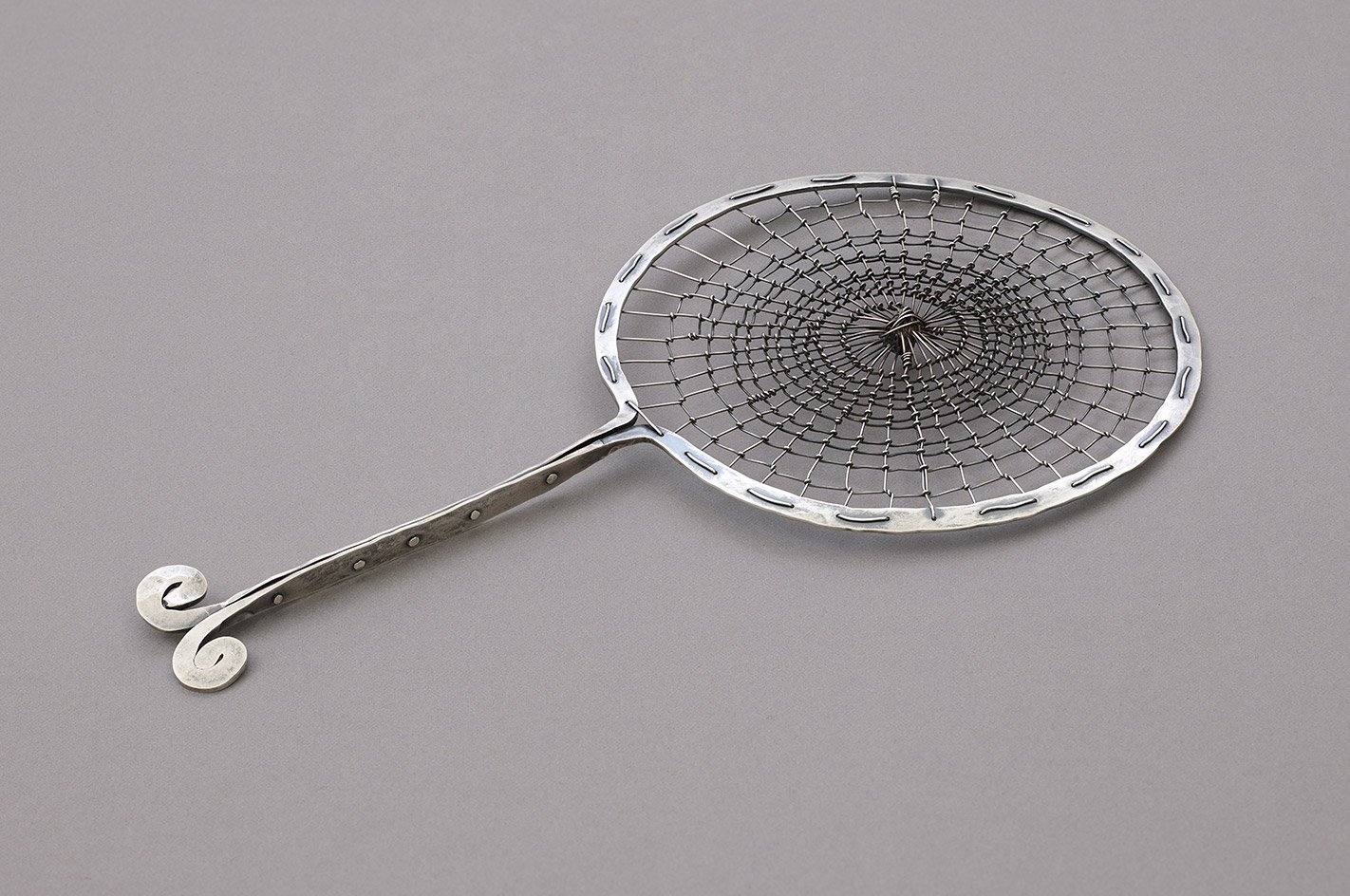
INFORMATION
‘From the Stony River to the Sky’ is on view until 9 September. For more information, visit the Hauser & Wirth website
ADDRESS
Hauser & Wirth Somerset
Durslade Farm
Dropping Ln
Bruton BA10 0NL
-
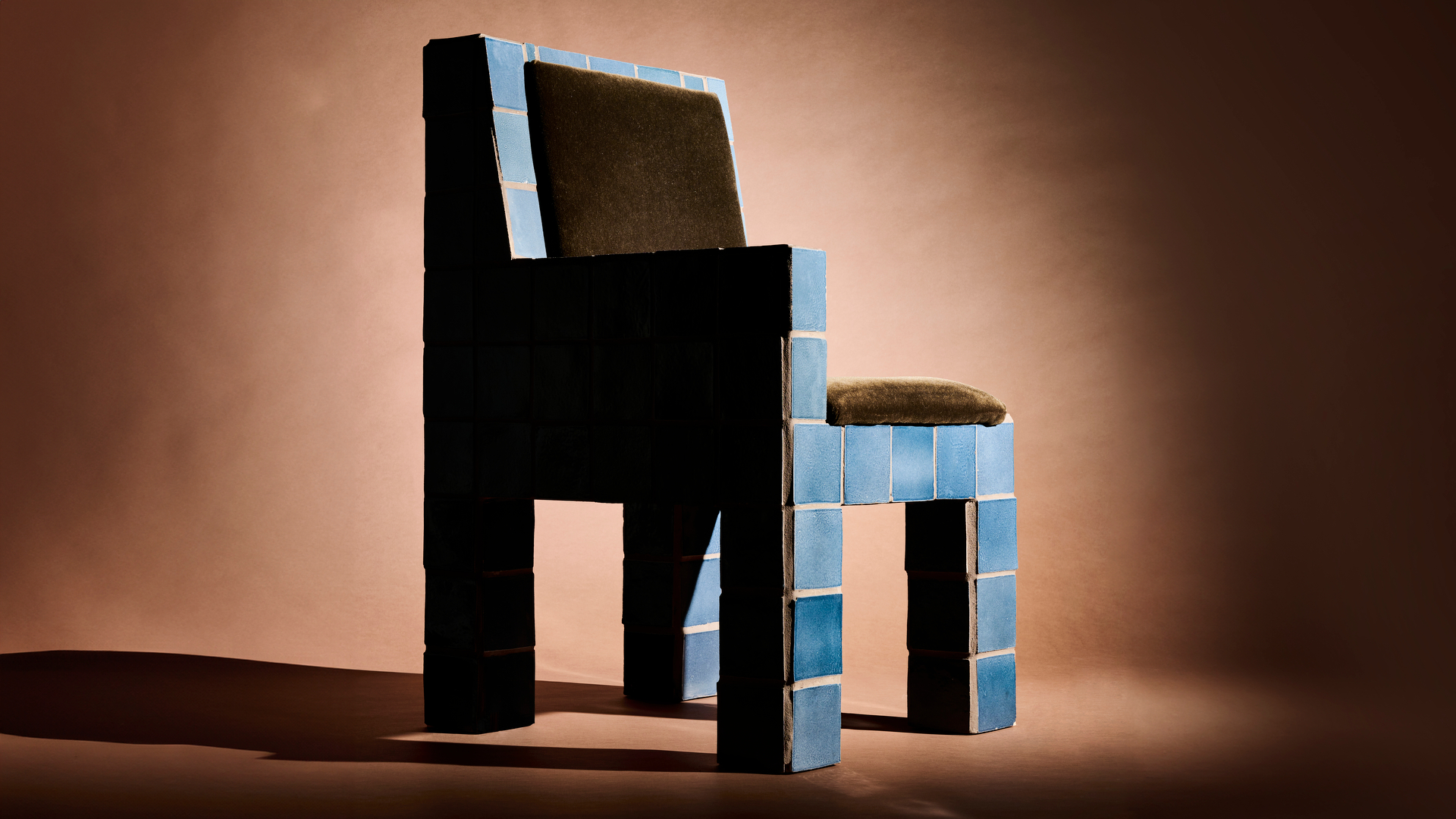 This LA-based furniture designer finds a rhythm in music and making
This LA-based furniture designer finds a rhythm in music and makingWallpaper* Future Icons: LA-based Ah Um Design Studio's expressive furniture features zig-zagging wooden frames, mohair and boucle upholstery, and a distinctive use of tiles
-
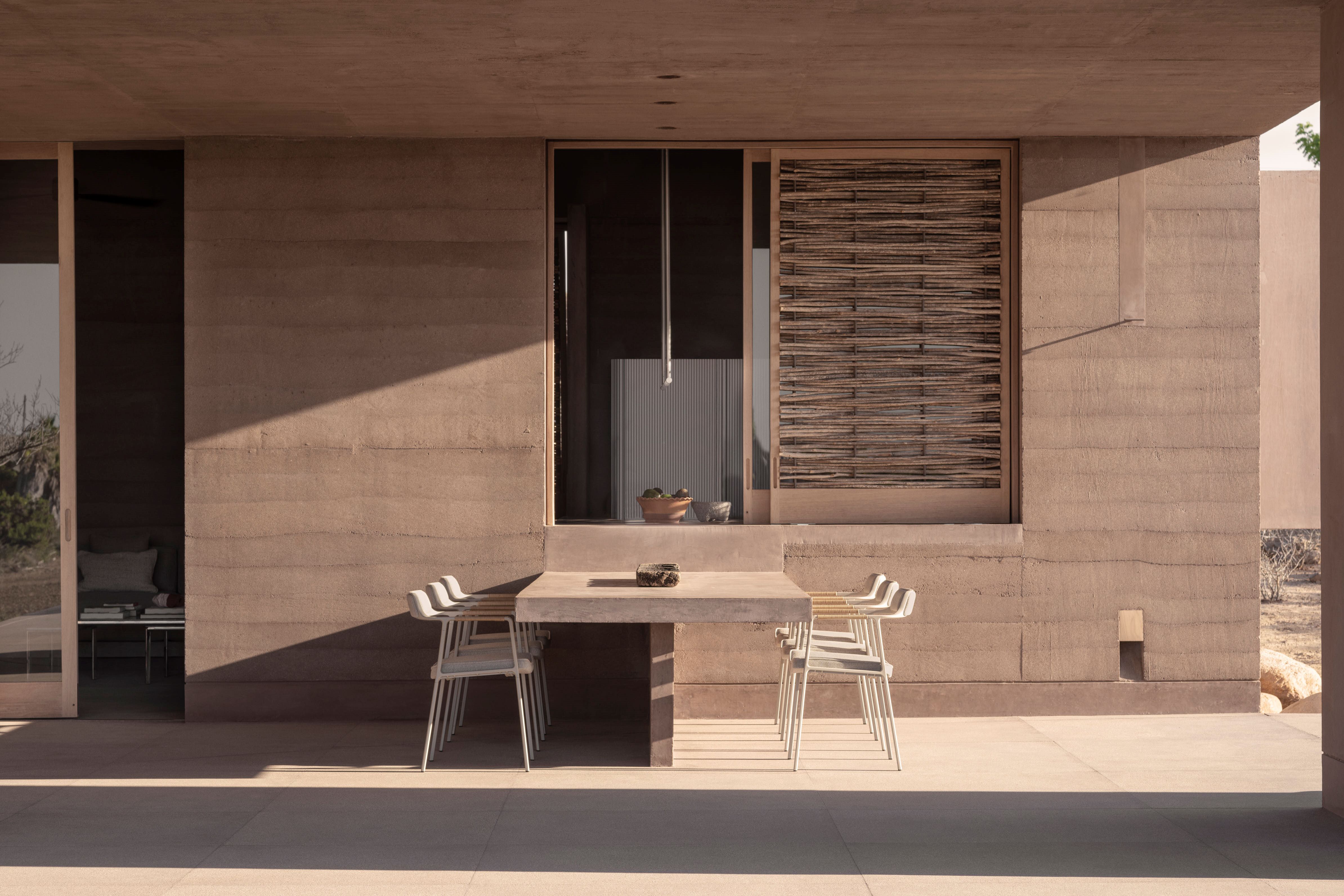 This Mexican architecture studio has a surprising creative process
This Mexican architecture studio has a surprising creative processThe architects at young practice Pérez Palacios Arquitectos Asociados (PPAA) often begin each design by writing out their intentions, ideas and the emotions they want the architecture to evoke
-
 The Bombardier Global 8000 flies faster and higher to make the most of your time in the air
The Bombardier Global 8000 flies faster and higher to make the most of your time in the airA wellness machine with wings: Bombardier’s new Global 8000 isn’t quite a spa in the sky, but the Canadian manufacturer reckons its flagship business jet will give your health a boost
-
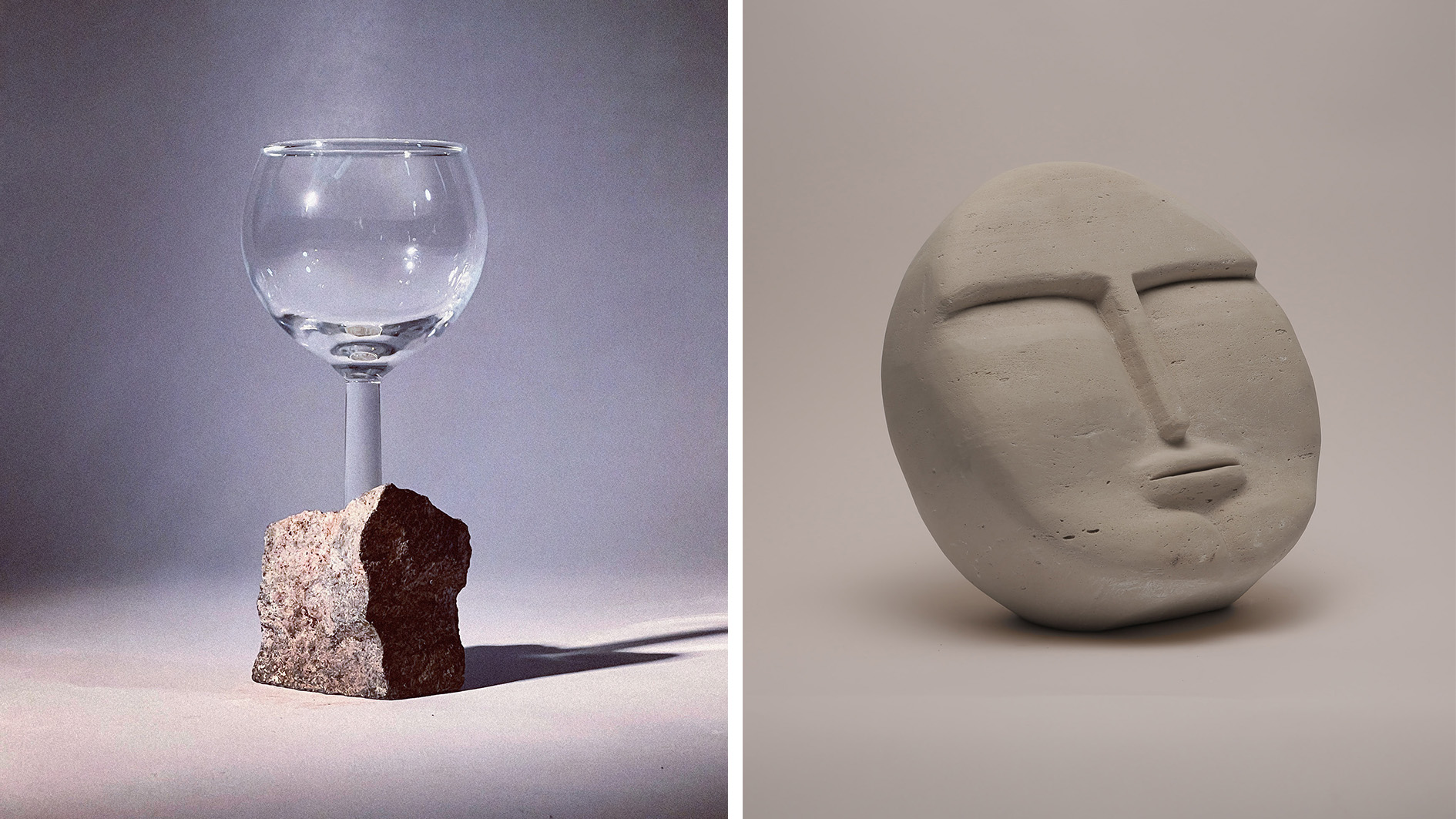 Seven Studio lends a modern, gritty edge to traditional Mallorcan stone carving
Seven Studio lends a modern, gritty edge to traditional Mallorcan stone carvingFounded by an artist-and-art-director duo, Seven Studio crafts furniture and objects that blend timeless beauty with bold brutalism
-
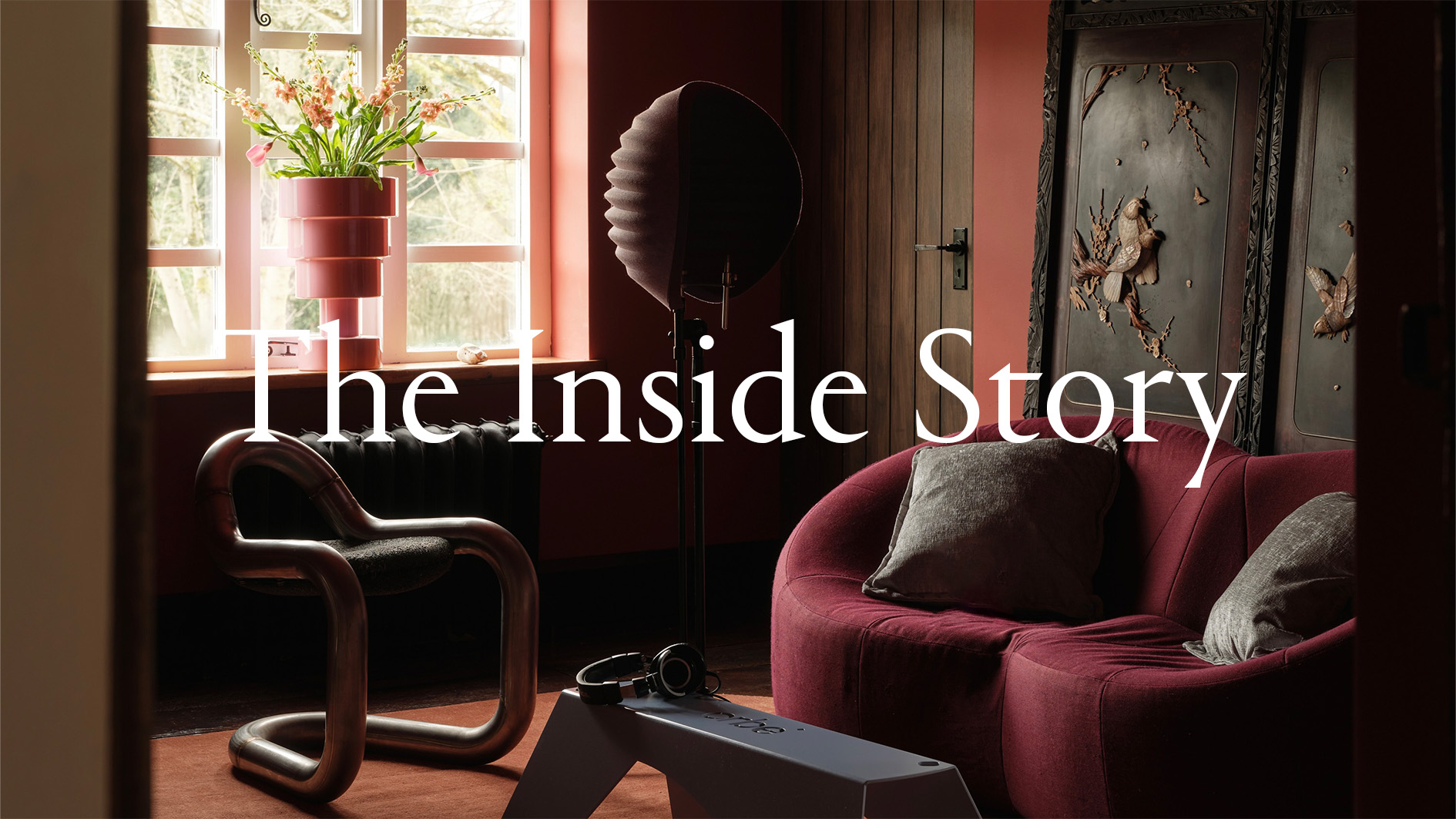 How do you modernise a home without making it feel modern? This farmhouse renovation is a stunning case study
How do you modernise a home without making it feel modern? This farmhouse renovation is a stunning case studyA 300-year-old English farmhouse has been given a new lease of life while staying true to the old ways
-
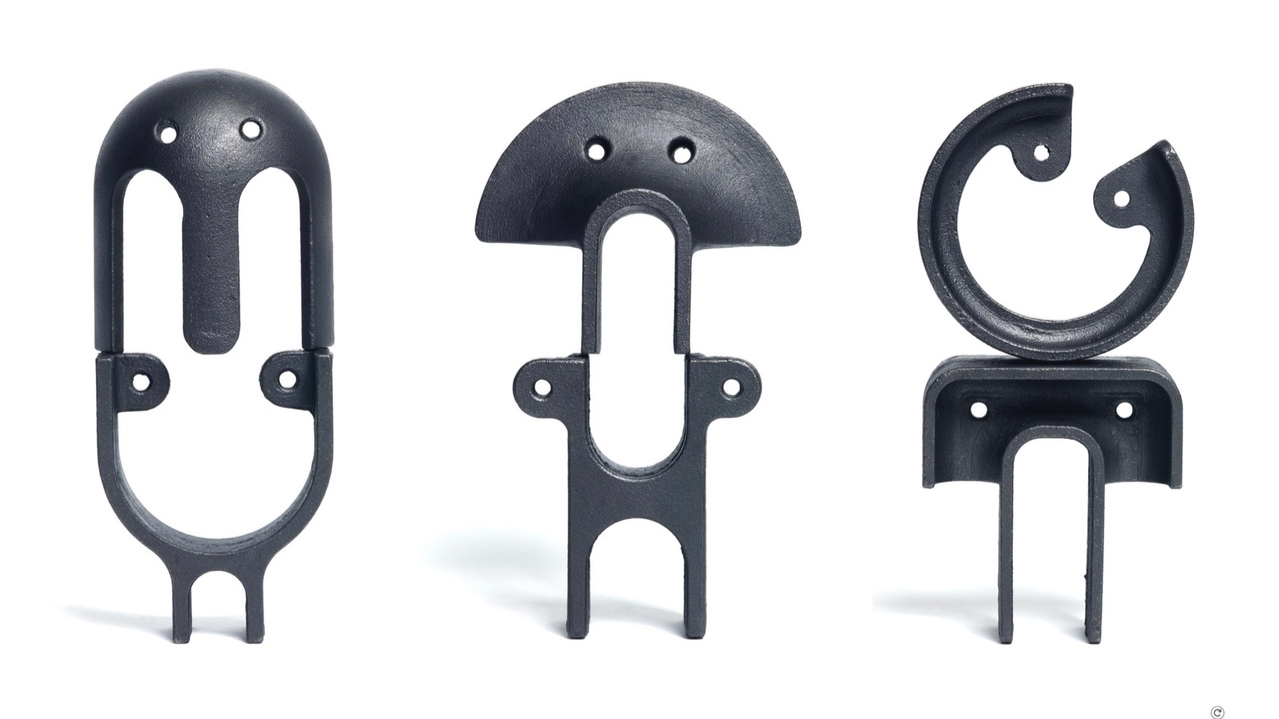 Studiomama’s cast faces capture a sense of childlike joy
Studiomama’s cast faces capture a sense of childlike joyMade in collaboration with one of London’s last traditional foundries, the studio’s ‘Face Castings’ series explores play, perception and the enduring influence of Bruno Munari
-
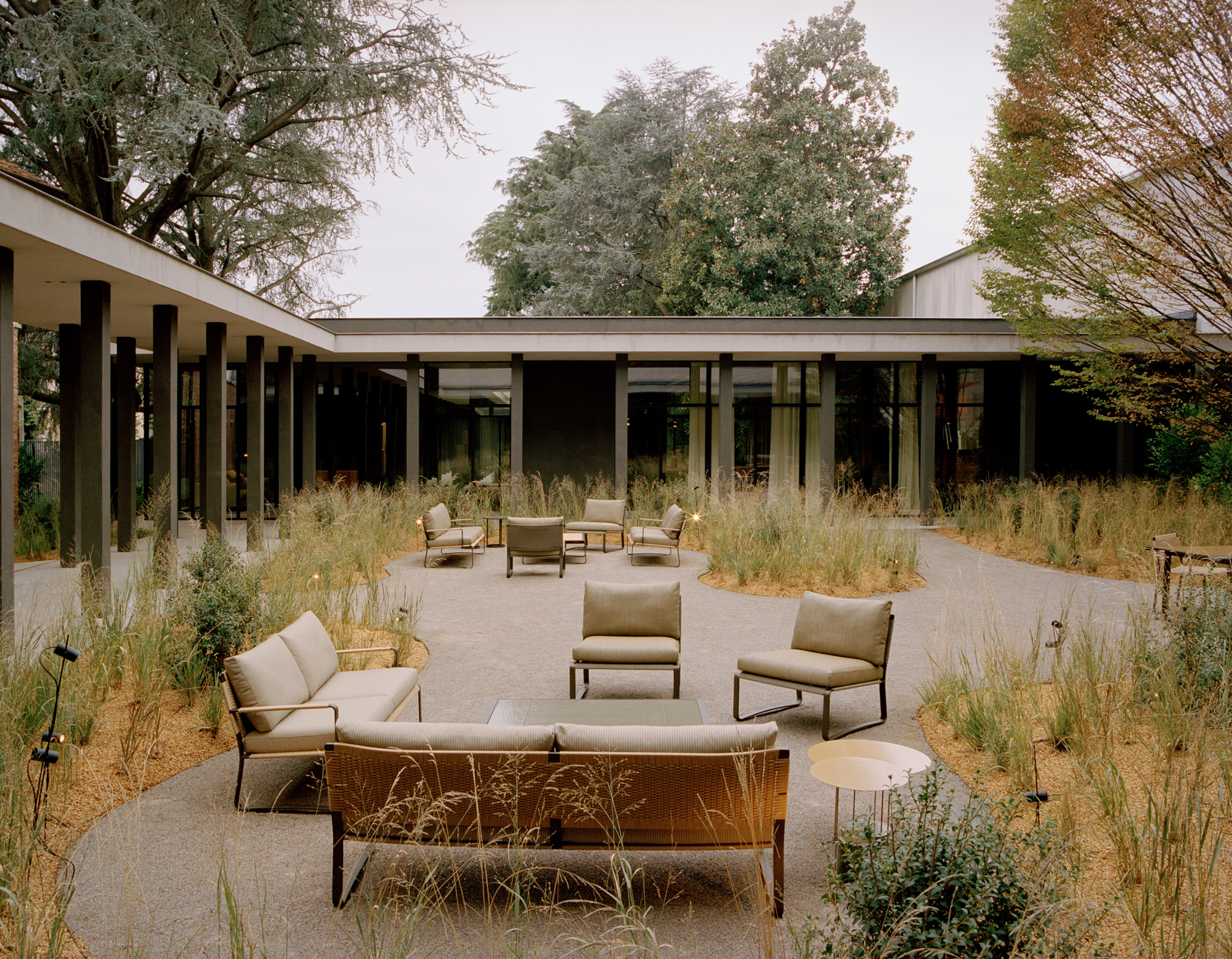 Vincent Van Duysen ‘inspired by modernism’ for Molteni & C’s outdoor furniture debut
Vincent Van Duysen ‘inspired by modernism’ for Molteni & C’s outdoor furniture debutMolteni & C goes alfresco with two new collections and reissued classics, bringing its signature elegance to the great outdoors
-
 First look inside Centurion New York by Yabu Pushelberg
First look inside Centurion New York by Yabu PushelbergCenturion New York is an expansive new space for American Express’ ‘black card’ members. Its interior designers Yabu Pushelberg give us a tour
-
 Is this the most beautiful office in the world?
Is this the most beautiful office in the world?Parisian creative agency Art Recherche Industrie’s new HQ translates a 19th-century landmark into a chic open-plan office worth leaving home for
-
 Designer James Shaw’s latest creation is a self-built home in east London
Designer James Shaw’s latest creation is a self-built home in east LondonJames Shaw's east London home is Filled with vintage finds and his trademark extruded plastic furniture, a compact self-built marvel
-
 Taschen tantalises with new edition of Jorge Pardo’s ‘Brussels Lamps’
Taschen tantalises with new edition of Jorge Pardo’s ‘Brussels Lamps’German publishing house Taschen launches a limited-edition series of five ‘Brussels Lamps’ by Cuban-American artist Jorge Pardo